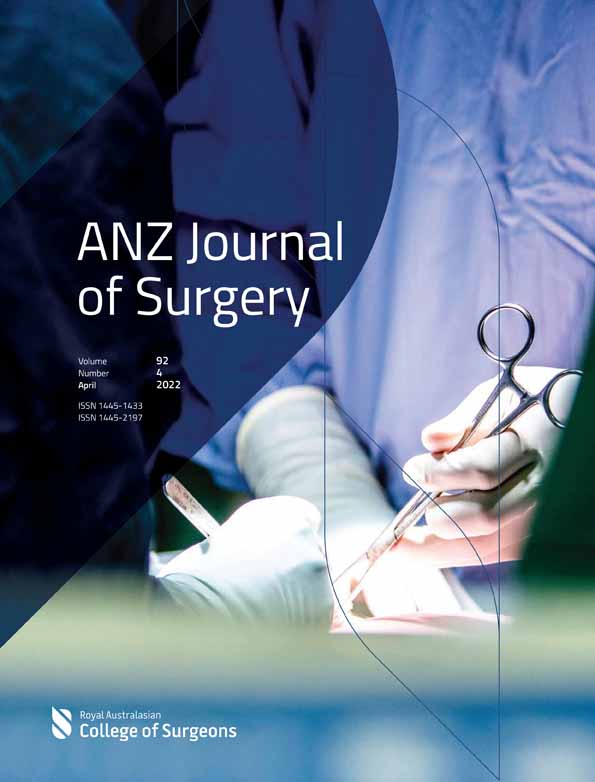Pre-operative predictive factors for gangrenous cholecystitis at an Australian quaternary cardiothoracic centre
Abstract
Introduction
The aim of this study was to determine associations between pre-operative factors and gangrenous cholecystitis. Gangrenous cholecystitis represents a severe spectrum of cholecystitis and is associated with an increased risk of complications. Early recognition and diagnosis of gangrenous cholecystitis can optimize prioritization for surgery and improve outcomes.
Methods
A retrospective case–control study was undertaken. Patient demographics, medical comorbidities, pre-operative biochemical and ultrasound findings as well as post-operative outcomes were assessed. Four hundred and fourteen patients who underwent an emergency cholecystectomy between 2018 and 2020 were reviewed.
Results
One hundred and nine (26%) patients who underwent emergency cholecystectomy during this 3-year period had gangrenous cholecystitis. These patients were older (median age 65 versus 45, P < 0.001) and more likely to be male (58.7% versus 32.5%, P < 0.001). Patients with coronary disease (OR 2.55, P < 0.001), hypertension (OR 2.25, P = 0.001), or arrhythmias (OR 3.64, P = 0.001) were two-to-three times more likely to have gangrenous cholecystitis. Patients with renal disease (OR 1.92, P = 0.004) or using antiplatelet medication (OR 2.27, P = 0.003) were twice as likely to have gangrenous cholecystitis. Patients who had gangrenous cholecystitis presented with a higher white cell count (median 13 x 109/L versus 8 x 109/L, P < 0.001) and a higher C-reactive protein (median 196 versus 18 mg/L, P < 0.001). Patients with gangrenous cholecystitis had poorer post-operative outcomes.
Conclusion
We verified predictive factors from existing literature and identified a number of novel pre-operative predictive factors for gangrenous cholecystitis which could help with development of a scoring system for clinical use.
Conflict of interest
None declared.




